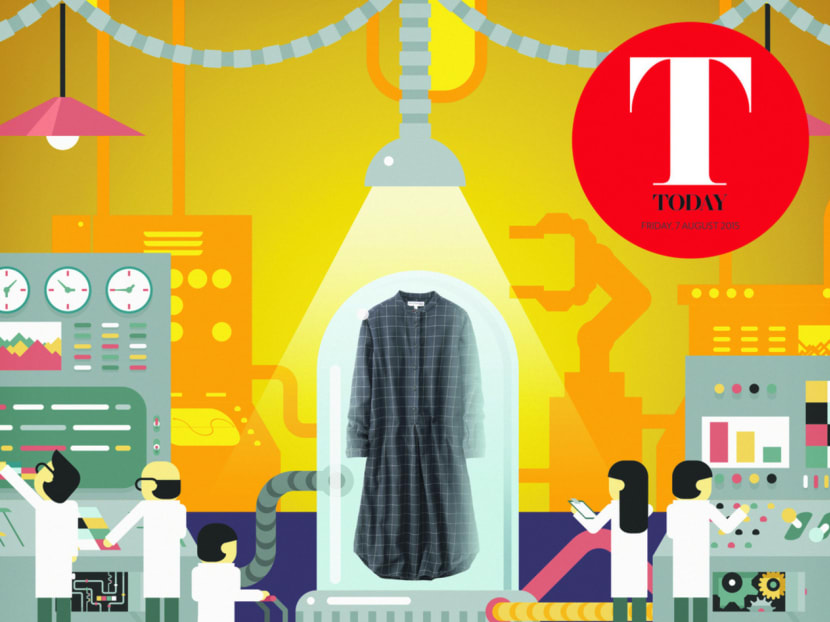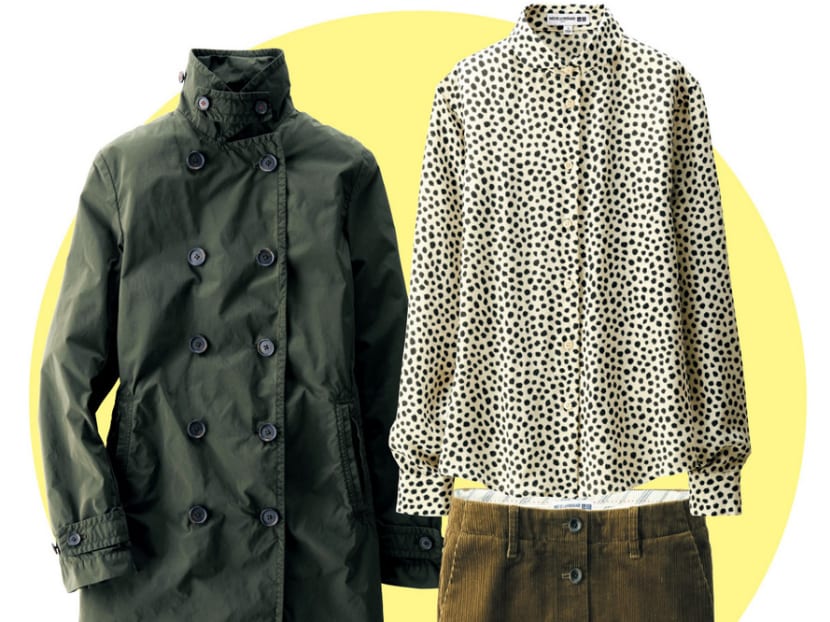Uniqlo: A utopian sci-fi story
In our minds, the UNIQLO headquarters looks like the futuristic science labs in Big Hero 6 or The Incredibles or pretty much every other animated movies, where top-secret inventions are cooked up by silent employees in lab coats and safety goggles.


In our minds, the UNIQLO headquarters looks like the futuristic science labs in Big Hero 6 or The Incredibles or pretty much every other animated movies, where top-secret inventions are cooked up by silent employees in lab coats and safety goggles.
That’s because when we were in Tokyo to preview the brand’s Fall Winter 2015 LifeWear Collection, we were overwhelmed by the idea that UNIQLO is less a purveyor of colourful, affordable basics and more a big-time breeder of genetically superior strains of “superclothing”, if you’ll pardon our use of metaphor. “Our product is almost like an industrial product — it is not just nice pieces of fabric you can wear and look good in,” said Seiya Sakai, product development and merchandising director (Men’s) of UNIQLO and group director of its parent company, Fast Retailing. “That is not the purpose.”
Hang on — it’s not?
Granted, the Japanese brand has always positioned itself more as a technology company than as a fashion company. But that sentiment is more evident this year, said its new president of global creative, John C Jay. The new collection, for example, is all about what UNIQLO terms “LifeWear”. It’s not just what you wear, but the idealised idea that everything in life, including your clothes, can be simpler, more streamlined, more efficient and better-performing. And that’s something that goes way beyond apparel.
That, said Jay, is what sets UNIQLO apart from other mass-market clothing brands. “LifeWear is our point of difference — the ability to make clothes that are constantly improving ... Yes, that may be a sweater, but we want it either warmer or lighter or cooler.”
He added: “It’s changing because everyone’s life is changing.”
LifeWear — a term that UNIQLO hired an English professor to come up with, according to Yuki Katsuta, UNIQLO’s head of research and design and group senior vice president of Fast Retailing — is a “superbreed” of clothing, it would appear. Culturally, clothing and fashion have always evolved organically. What puts UNIQLO in the unique standpoint to step in and play the Promethean mad scientist?
THE SCIENCE OF PERFECTION
This objective approach to clothes, Jay said, stems from the fact that, being a Japanese maker of Western clothes, UNIQLO has an outsider’s perspective, and when it comes to thinking up ways to improve a garment, the burden of trends and culture don’t factor into their methods. And the Japanese, of course, are fabled perfectionists.
“This company came through the roots of Japan, which looks at Western apparel in a completely different way,” he said, pointing out that the written Japanese character for “clothes” doesn’t just say “clothes”, it says “Western clothes”. “Therefore, all I care about is that those are khakis and I’m going to make those khakis better and better, regardless of lifestyle trends, regardless of cultural input and so on,” Jay said. “I think we dare to change things where people don’t dare to change.”
He added: “Denim, for example, is filled with history and (gets) a lot of personal love from everyone. Sometimes, we get trapped in this idea of legacy and authenticity.”
UNIQLO’s principle, he said, is “don’t be a slave to the idea of classic”. That means adding technology to their clothes. This includes HeatTech, which now has camellia oil blended into both menswear and womenswear, or the new women’s super skinny fit Denim Yoga Pants, which are made with Kaihara denim, or the new Miracle Air fabric used in the men’s Skinny Fit Tapered Jeans, which is 20 per cent lighter.
“Our game is longevity,” said Jay. “Take that thing and make it better and better, as if it’s possible to make the perfect white shirt or the perfect black jeans.”
In that sense, UNIQLO aims to offer the greatest good for the greatest number, to be all things to all people. They want you to think of their offerings as the building blocks of a smart-wardrobe (like smartphone or smart car).
“What we are trying to do every day is to provide our clothes to as many people as we can,” said Katsuta. “We want to make simple, great items because we expect all customers to use our clothes as part of their styling. So, design-wise, it’s a negative activity — we take things out and make it simple. At the same time, we have to insert newness, excitement — maybe in womenswear, sexiness — all in one design.”
MYSTERY AND MAGIC
This intriguing conundrum and the satisfying challenge it poses is one reason why big-name designers such as Jil Sander, Orla Kiely and Ines de la Fressange have collaborated with the brand. This season, UNIQLO adds to that list Carine Roitfeld, who is Harper’s Bazaar’s global fashion director and former French Vogue editor, and LEMAIRE, the French brand by designers Christophe Lemaire and Sarah-Linh Tran.
Another reason is, perhaps, curiosity. “We are, in a sense, a mysterious brand,” Seiya Sakai of Fast Retailing Co Ltd pointed out. “Our price point may not be that high, yet we use quality fabrics. Take cashmere, for example — top-notch designers are all surprised how we can offer it at such an affordable price. There are so many secrets they would like to know.”
When you think about it, though, it makes perfect sense: Paring down in order to build up. But the mystique — and even UNIQLO’s “LifeWear” marketing strategy itself — point to the fact that it’s really not just about technological hardware or clinical research and development. “It can’t be left-brain only. It can’t just be rational,” Jay conceded. “Because all clothing, whether you want to admit it or not, whether it has a logo or not, is emotional. It does express who you are, in some way or form.”
The new Ines de la Fressange collection, for instance, is all about moods and memories. It was built upon de la Fressange’s memories of her childhood spent holidaying in a snowy mountain lodge, said UNIQLO’s design director Naoki Takizawa, who worked with her on the collection — the French model’s fourth collaboration with the brand.
Building upon those recollections, the clothes, which include a velvet jacket, cable knit sweaters and berets, tell a “40s movie story” inspired by quaint vintage elements such as, most whimsically, the clothing of chimney sweeps. “I think stories are very important. I think people enjoy stories,” he said.
Whether it’s a well-thumbed classic or an ambitious work of science fiction — or maybe even a Murakami-esque hybrid of genres — it’s why the UNIQLO story is undeniably a page-turner.
This trip was made possible by UNIQLO.







